What is Plagiocephaly?
Plagiocephaly, also known as flat head syndrome, is an asymmetrical distortion of the head. It is a common condition affecting the head and face of your baby.
80% of skull growth takes place in the first year of life. Many factors can cause flat spots. The bones of a baby’s skull are soft and flexible, and pressure from everyday surfaces, such as beds or car seats, can cause misshaping.
What Does Plagiocephaly Look Like?
- Brachycephaly – Head is wide and short
- Plagiocephaly – Head is flat on one side
- Scaphocephaly – Head is longer and narrower than normal
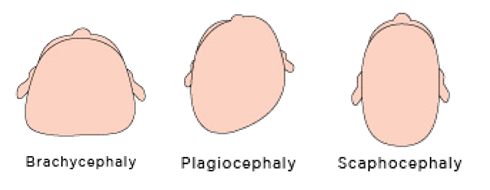
How Do You Know if Your Child has Plagiocephaly?
You may notice that your child’s head looks asymmetrical when viewed from above. There will be a flat spot at the back or side of the head. This spot usually has little hair growth.
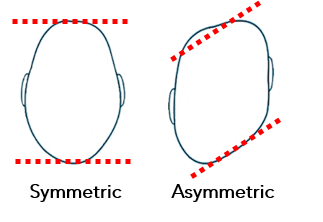
Plagiocephaly is more than a cosmetic concern. It may cause complications such as uneven facial or head growth and jaw or speech problems. It is important to control and stop the deformity worsening.
What are the Causes of Plagiocephaly?
Babies can develop misshapen heads for a number of reasons:
- Lying for long periods of time with the baby’s head in one position
- Womb position - babies who become stuck in one position or do not have enough room to move in the womb are at risk of developing plagiocephaly. A breech orientation can also lead to an abnormal head shape
- Positioning during birth
- Torticollis - Congenital Muscular Torticollis (CMT) is a condition in which the neck muscles are abnormally tight, causing baby’s head to tilt and/or turn to one side. Torticollis often causes the head to be held in a single position, which can lead to plagiocephaly.
How is Plagiocephaly Treated?
Plagiocephaly may be treated by repositioning the baby to take pressure off the flat spot of the head. This is effective if the baby is diagnosed before 6 months.
For more severe cases, a helmet can be used to remould the skull. Ideally, treatment should start as early as possible, before the baby’s first birthday.
What is the Helmet Treatment?
If a helmet is needed, the orthotist will take a plaster mould of your baby’s head. The plaster model is then modified to give a symmetrical shape. This allows the baby’ bones to grow to fill the space within the helmet. The helmet must be worn 23 hours a day for an about 6 months.
How Does the Helmet Treatment Work?
•The helmet causes the bones of the skull to be remoulded into a more symmetrical shape by applying pressure to the high spots of the head while leaving space for the flattened area to grow into
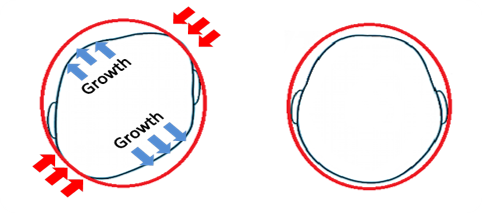
•If treated early enough, good result can be obtained for a large percentage of babies
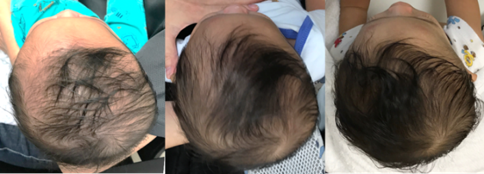
- The orthotist will modify the helmet during the course of treatment as remoulding of the skull takes place
- The helmet needs to be replaced whenever it gets too small
- The orthotist will explain to you how to use and care for the helmet
- You may bring in cloth with a design of your choice to make the helmet more interesting for your child
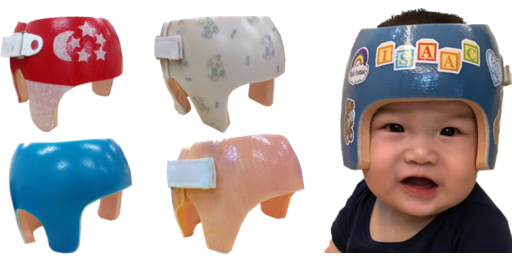
How Do I Book an Appointment?
- At your first outpatient appointment visit, your child would be assessed accordingly by your clinician
- A second follow-up consultation will be scheduled for fitting of the helmet
- Your child would be scheduled for review to check on his/her progress with the helmet
Opening Hours
Mondays – Fridays 8.00am to 5.00pm
Saturdays 8.00am to 12.00pm
